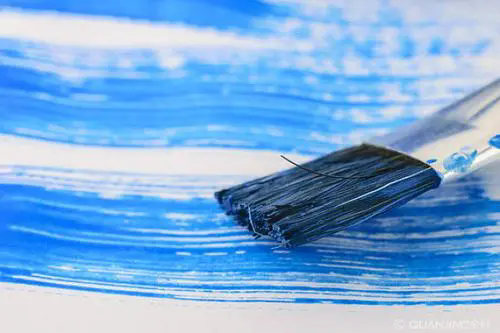Proven Techniques to Extend the Lifespan of Paint Brushes Through Effective Maintenance
Paint brushes are essential tools for achieving smooth finishes, but their longevity depends on proper care. Implementing these practical strategies can significantly reduce wear and tear, ensuring brushes remain functional for multiple projects.

Thorough Cleaning After Every Use
Residual paint is the primary cause of bristle degradation. Removing all traces of paint immediately after use prevents hardening and maintains flexibility.
For Water-Based Paints:
Start by rinsing the brush under lukewarm water while gently squeezing the bristles from base to tip. Avoid hot water, as it can loosen the glue holding bristles to the handle. If paint persists, use a mild dish soap to break down residues.
For Oil-Based Paints:
Soak the brush in a solvent like mineral spirits for 10–15 minutes. Swirl the brush gently to dislodge paint, then press against the container’s sides to remove excess solvent. Repeat with fresh solvent until no paint remains.
Avoid Soaking for Extended Periods:
Leaving brushes in solvents overnight can weaken the adhesive at the base, leading to bristle loss. Always clean and dry brushes promptly.
Proper Drying Techniques to Preserve Shape
How brushes are dried directly impacts their structural integrity. Incorrect methods can cause bristles to splay or handles to crack.
Horizontal or Upside-Down Drying:
Lay the brush flat on a clean surface or hang it upside down using a clip or hook. Gravity keeps bristles aligned, preventing deformation. Avoid drying brushes upright, as water can pool at the base and loosen bristles.
Patience is Key:
Allow brushes to air-dry completely before storage. Rushing the process with heat sources like hairdryers can melt synthetic bristles or warp wooden handles.
Check for Moisture:
Even after surface drying, internal moisture can lead to mold. Ensure brushes feel dry to the touch before storing them.
Strategic Storage to Prevent Damage
Storing brushes correctly protects them from environmental factors and physical stress.
Avoid Tight Spaces:
Never cram brushes into containers where bristles are compressed. This causes permanent bending, especially for natural-hair brushes. Use a dedicated brush holder or repurpose a cardboard tube to keep brushes upright.
Control Humidity:
Store brushes in a cool, dry place. High humidity can soften bristles, while excessive dryness may make them brittle. If storing long-term, wrap brushes in breathable material like paper to prevent dust accumulation.
Separate by Type:
Keep brushes used for different paint types (e.g., oil vs. water-based) separate to avoid cross-contamination. Residual solvents or pigments from one brush can damage others.
Handling Practices to Minimize Wear
Mindful handling during painting reduces unnecessary stress on bristles and handles.
Use Light Pressure:
Applying excessive force bends bristles permanently, particularly synthetic ones. Let the brush do the work—light, even strokes are sufficient for most surfaces.
Rotate Brushes for Different Tasks:
Reserve specific brushes for rough textures (e.g., brick) and others for delicate finishes (e.g., cabinetry). This prevents premature fraying and extends the usability of each brush.
Clean Between Coats:
If pausing during a project, wrap the brush in plastic wrap or aluminum foil to prevent paint from drying on the bristles. This is crucial for oil-based paints, which cure rapidly.
Long-Term Bristle Care for Natural-Hair Brushes
Natural-hair brushes require occasional conditioning to maintain softness and prevent brittleness.
Apply Conditioner Sparingly:
After cleaning, work a small amount of brush conditioner or linseed oil into the bristles. Focus on the base where bristles meet the handle. Wipe off excess with a cloth to avoid attracting dust.
Avoid Over-Conditioning:
Excessive oil can gum up bristles, making them less effective. Use conditioner only when bristles feel stiff or dry to the touch.
Store Properly After Conditioning:
Allow conditioned brushes to dry completely before storage to prevent oil from transferring to other surfaces.
By integrating these techniques into daily routines, users can maximize the lifespan of their paint brushes. Consistent cleaning, careful drying, and strategic storage ensure brushes remain reliable tools for achieving professional-quality results.
